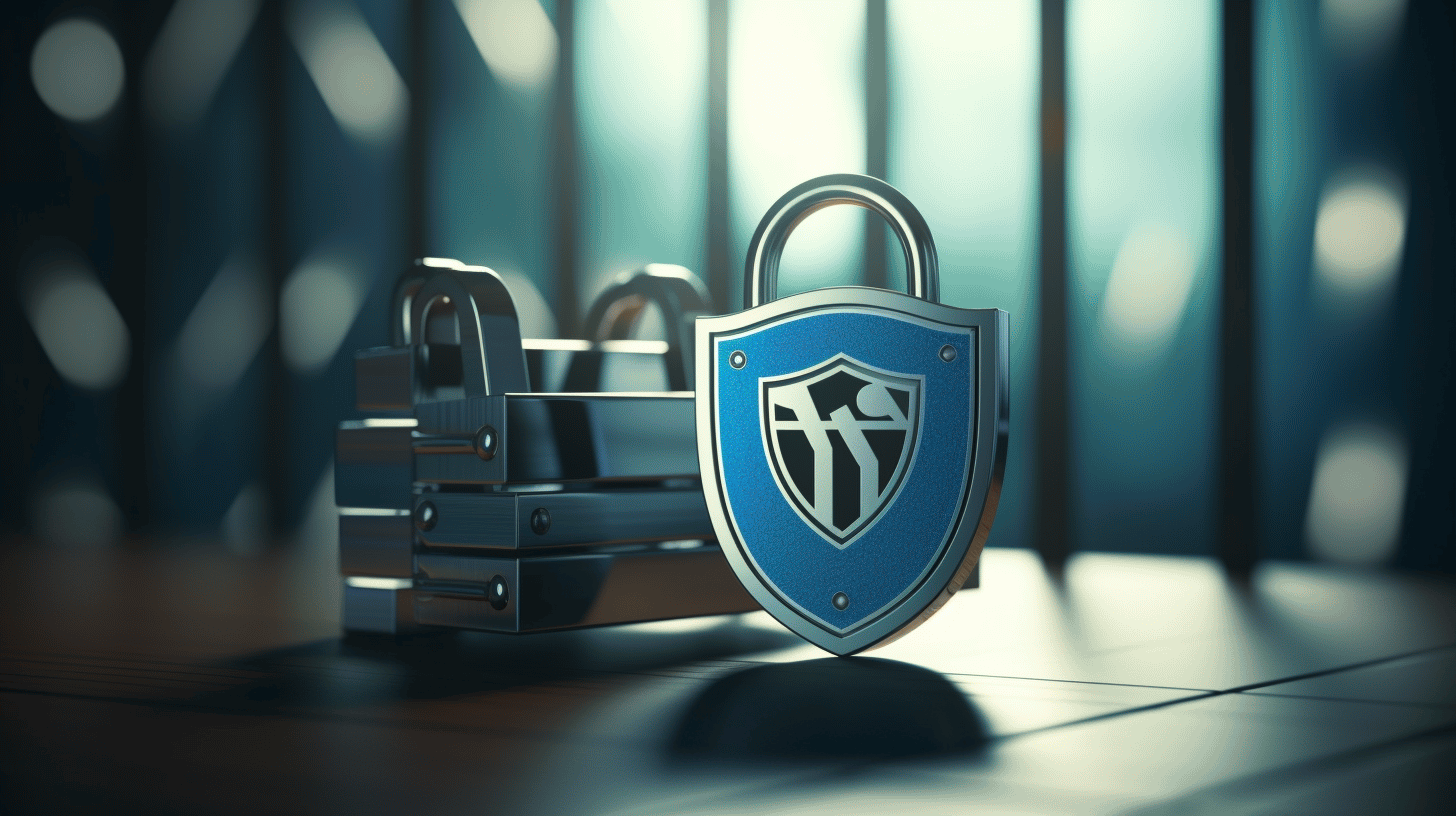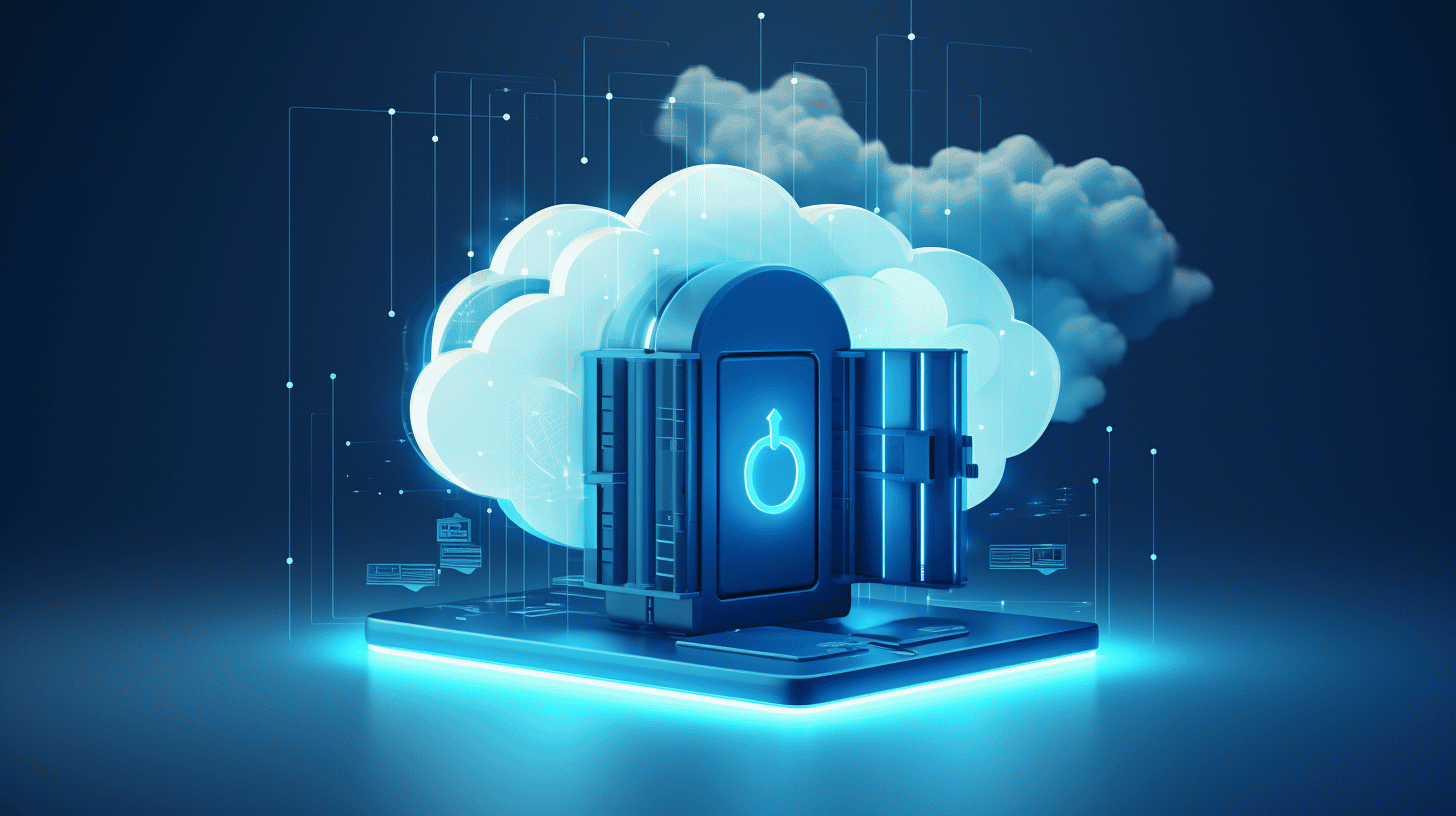在當今的數位環境中,網站安全至關重要。隨著網路威脅的不斷演變,網站所有者採取主動措施保護其線上資產至關重要。對於 WordPress 用戶來說尤其如此,因為 WordPress 為超過 35% 的互聯網提供支持,使其成為網路犯罪分子的有吸引力的目標。
在本文中,我們將深入研究網站安全的世界,並為 WordPress 用戶提供基本技巧,以最大限度地提高網站安全性。無論您是小型企業主、部落客還是電子商務企業家,這些提示都將有助於保護您的網站並使其免受潛在威脅。
因此,請繫好安全帶,準備好加強您的 WordPress 網站,抵禦可能損害您的資料、聲譽和線上業務的網路攻擊。讓我們開始吧! 👊
網路犯罪統計概覽
想像一下,網路犯罪猖獗,對企業和個人都構成威脅的世界。這種不幸的現實比我們想像的更為普遍。網路犯罪被定義為透過使用電腦或網路進行的任何犯罪活動,已成為全球緊迫的問題。在本節中,我們將探討一些令人大開眼界的網路犯罪統計數據,以闡明這個日益嚴重的問題的範圍和影響。
網路犯罪的全球成本
網路犯罪代價高昂,這已不是什麼秘密。事實上,據估計,到 2023 年,網路犯罪每年將為企業造成 $10.5 兆美元的損失[1](https://www.thomasnet.com/articles/other/how-much-money-does-cybercrime-cost-the-economy/)。這個令人難以置信的數字突顯了世界各地的組織(從小型企業到跨國公司)所面臨的巨大財務負擔。
網路安全產業的發展
隨著網路威脅的不斷發展,對強而有力的網路安全措施的需求也不斷增長。為了打擊不斷上升的網路犯罪浪潮,網路安全產業取得了顯著成長。目前,該公司在全球擁有約 550 萬名員工[2](https://www.cisco.com/c/en/us/products/security/security-reports.html)。這些網路安全專業人員孜孜不倦地工作,以保護網路、系統和資料免受惡意行為者的侵害。
網路攻擊的頻率和影響
網路攻擊發生的頻率令人震驚。網站平均每天遭受 94 次攻擊,數量驚人[3](https://www.securitymagazine.com/articles/95291-global-rate-of-cyberattacks-increased-by-353-in-one-year)。這意味著,當您享用早晨咖啡時,世界各地的網站都在進行無數次破壞網站安全的嘗試。這些攻擊可能會產生深遠的後果,包括經濟損失、聲譽損害,甚至法律後果。
系統入侵趨勢
系統入侵(即未經授權的個人存取電腦系統和網路)一直在增加。 2016 年,報告的系統入侵百分比為 14%。快轉到 2023 年,這個數字幾乎翻了一番,達到 30%[4](https://resources.forescout.com/wbr-2020-global-impact-report-americas?cid=7015G0000019gxSQAQ&utm_campaign=2020us-ww-wbrgim-americas-paidsearch-dac&utm_medium=Paid%20Search&utm_source=google&utm_content=brand&gclid=CjwKCAjwhYOFBhBkEiwASF3KM1IevfLFkpBtoHtHum7ln7Hyfn_eI2VX3pWkTQ7PhR95-xxRW3HNpRoCLC0QAvD_BwE)。這一顯著增長凸顯了採取強有力的網路安全措施來保護敏感資訊並防止未經授權的存取的必要性。
資料外洩成本
網路犯罪最具破壞性的後果之一是資料外洩。 2023年,全球資料外洩平均成本達到驚人的$445萬[5](https://www.ibm.com/security/digital-assets/cost-data-breach-report/#/)。這意味著在短短三年內增加了 15%。這些成本考慮了各種因素,包括事件回應、業務損失以及潛在的法律後果。
掌控您的網站安全
在日益數位化的世界中,保護您的線上形象至關重要。網路犯罪的後果可能是毀滅性的,無論是在經濟上還是在聲譽上。要了解有關增強網站安全性的步驟的更多信息,請查看“掌握網站安全性”的綜合指南[6](https://management-wp.com/blogs/mastering-website-security-protect-your-business-with-management-hosting/)。它提供了寶貴的見解和實用技巧,以保護您的企業免受日益增長的網路犯罪威脅。
最脆弱的部門
在當今的數位時代,網路威脅普遍存在且不斷演變。沒有哪個行業能夠免受這些攻擊,但某些行業特別容易受到攻擊。本節將探討已成為網路犯罪分子主要目標的兩個產業:金融部門和教育機構。
金融領域
包括銀行、保險公司和投資公司在內的金融部門因其擁有大量敏感的金融數據而成為網路攻擊的有吸引力的目標。以下是需要考慮的一些關鍵點:
- 🎯 根據產業報告,金融業是網路攻擊第二大目標產業,僅次於醫療保健產業。
- 💸 這些攻擊背後的動機通常是經濟利益。網路犯罪分子旨在利用漏洞並未經授權存取金融系統或竊取有價值的客戶資訊。
- 🚫 網路釣魚活動是針對金融部門的常見策略。這些活動試圖誘騙個人洩露機密訊息,例如登入憑證或財務詳細資訊。
- 🛡️ 為了應對這些威脅,金融機構大力投資網路安全措施,包括強加密、多因素身份驗證和強大的防火牆。
- 🌐 客戶保持警惕並採取必要的預防措施至關重要,例如定期更新密碼、不透過不安全的管道分享敏感資訊以及警惕可疑的電子郵件或電話。
教育機構
在考慮網路攻擊時,可能不會立即想到教育機構,包括學校、學院和大學。然而,這些機構擁有有價值的數據,使其成為有吸引力的目標。以下是您需要了解的內容:
- 🎯 針對教育機構的數位攻擊正在增加,對學生和機構本身都產生了重大影響。
- 🏫 在最近進行的一項研究中 來源結果發現,針對教育機構的攻擊有29%源自漏洞利用,而30%則源自網路釣魚活動。
- 🔑 漏洞利用涉及利用教育機構使用的軟體或系統中的弱點,使駭客能夠未經授權存取學生記錄、個人資訊甚至財務資料。
- 💌 針對教育機構的網路釣魚活動通常旨在透過冒充學校或教育組織等可信來源來收集敏感信息,例如用戶名、密碼或財務詳細信息。
- 🛡️ 教育機構正在採取措施增強其網路安全協定。這包括定期軟體更新、員工安全最佳實踐培訓以及實施強大的威脅偵測和預防系統。
整體而言,金融部門和教育機構面對網路威脅必須保持警惕。透過投資強有力的網路安全措施並教育用戶潛在風險,這些部門可以更好地保護自己及其利害關係人免受網路攻擊。
網站中網路安全威脅的普遍性
🔒 介紹 🔒
在當今的數位時代,網站已成為我們生活中不可或缺的一部分。從線上購物到社交網絡,我們出於各種目的依賴網站。然而,隨著線上環境的發展,針對這些網站的網路安全威脅也顯著增加。了解這些威脅的普遍性至關重要,以便採取適當措施保護我們自己和我們的線上資產。
🕵️♀️ 網路安全威脅的現實 🕵️♀️
最近的研究公佈了一些有關網站網路安全威脅普遍程度的令人震驚的統計數據。一項研究發現,數量驚人的 18% 網站被發現包含嚴重的網路安全威脅[數據1]。這意味著近五分之一的網站可能存在網路犯罪分子可以利用的漏洞。這些威脅對造訪這些網站的使用者的安全和隱私構成重大風險。
📈 最常見的網路安全威脅類型 📈
為了有效應對網路安全威脅,必須了解網站面臨的最常見類型。以下是一些範例:
- 惡意軟體 🦠:惡意軟體,例如病毒、蠕蟲或勒索軟體,可能會感染網站並危及其安全。惡意軟體可以透過受感染的文件或連結傳播,針對毫無戒心的訪客。
- 網路釣魚攻擊 🎣:網路釣魚攻擊涉及誘騙用戶洩漏密碼、信用卡號或個人資料等敏感資訊。網路犯罪分子創建模仿合法網站的虛假網站,欺騙用戶洩露其機密資訊。
- SQL注入 🆎💉:SQL 注入攻擊透過注入惡意程式碼來利用網站資料庫中的漏洞。這可能允許駭客未經授權存取資料庫中儲存的敏感資料。
- 跨站腳本 (XSS) ✍️😈:當惡意腳本被注入網站並在使用者瀏覽器中執行時,就會發生 XSS 攻擊。這可能導致敏感資訊被盜或網站內容被操縱。
💻 保護網站免受網路安全威脅 💻
鑑於網路安全威脅的普遍存在,網站所有者必須優先考慮其線上平台的安全。以下是一些有助於保護網站免受潛在威脅的重要措施:
- 定期更新:讓所有軟體、外掛程式和主題保持最新,以確保修補漏洞並增強安全性。
- 強大的密碼:鼓勵使用者建立強密碼並實施雙重認證等措施以提高安全性。
- 安全託管:選擇信譽良好的託管供應商,提供強大的安全措施,例如定期備份、防火牆保護和入侵檢測系統。
- Web 應用程式防火牆 (WAF):部署 WAF 來過濾惡意流量並防範常見的基於 Web 的攻擊。
- 教育用戶:提高網站使用者對常見網路安全威脅的認識,並提供如何保持線上安全的指導。
🛡️ 結論 🛡️
網站中網路安全威脅的普遍存在是一個不容忽視的嚴峻現實。由於我們在生活的各個方面繼續依賴網站,因此採取積極主動的措施來保護我們自己和我們的資訊至關重要。透過隨時了解常見威脅並實施強有力的安全措施,我們可以降低成為網路犯罪分子受害者的風險。請記住,在網路安全方面,預防永遠勝於治療。
WordPress 特定的安全風險和提示
介紹
在當今的數位時代,網站在我們的個人和職業生活中發揮著至關重要的作用,確保 WordPress 網站的安全至關重要。 WordPress 作為最受歡迎的內容管理系統,也無法免於安全風險。在本節中,我們將探討 WordPress 網站面臨的一些特定安全風險,並為您提供加強 WordPress 網站安全性的提示。
WordPress 網站的常見安全風險
由於過時的軟體、弱密碼、惡意外掛程式/主題等因素,WordPress 網站可能容易遭受各種安全風險。了解這些風險是保護您的網站免受潛在威脅的關鍵一步。以下是與 WordPress 相關的一些常見安全風險:
- 過時的軟體:使用過時版本的 WordPress 核心、主題或外掛程式可能會使您的網站面臨已在新版本中修補的漏洞。
- 弱密碼:簡單且容易猜到的密碼可以讓駭客更輕鬆地未經授權存取您的 WordPress 管理區域。
- 惡意外掛程式/主題:安裝來自不可靠來源的外掛程式或主題可能會將惡意程式碼引入您的網站,從而損害其安全性。
- 暴力攻擊:這些攻擊涉及駭客利用自動腳本反覆猜測使用者名稱和密碼,直到他們獲得對您網站的存取權限。
- 使用者權限不足:允許使用者對您的 WordPress 網站進行不必要的存取和權限可能會增加未經授權的變更或資料外洩的風險。
加強 WordPress 安全性:提示和最佳實踐
現在我們已經確定了一些常見的安全風險,讓我們來看看增強 WordPress 網站安全性的實用技巧和最佳實踐:
- 保持軟體更新:定期將您的 WordPress 核心、主題和外掛程式更新到最新版本。這有助於確保您擁有最新的安全補丁和改進。
- 使用強密碼:為您的 WordPress 管理員帳戶和使用者帳戶建立強大且唯一的密碼。考慮使用密碼管理器來安全地產生和儲存複雜的密碼。
- 選擇可靠的外掛和主題:僅安裝來自信譽良好的來源(例如 WordPress.org 儲存庫或受信任的開發人員)的外掛程式和主題。定期更新它們以消除潛在的漏洞。
- 限制使用者權限:仔細分配使用者角色和權限,僅授予每個使用者帳戶執行其任務所需的權限。僅將管理存取權限限制為受信任的個人。
- 啟用雙重認證:實施雙重認證要求使用者提供額外的驗證步驟(例如發送到其行動裝置的代碼及其密碼),從而增加了額外的安全層。
- 實作 Web 應用程式防火牆 (WAF):WAF 透過過濾和阻止可疑請求來幫助保護您的網站免受惡意流量和利用漏洞的嘗試。
結論
在網路安全威脅不斷發展並對全球網站造成嚴重破壞的情況下,WordPress 用戶優先考慮網站安全至關重要。透過實施最佳實踐和安全措施的結合,使用者可以顯著降低遭受攻擊的脆弱性並保護其寶貴的數位資產。
請記住,網站安全不是一次性的努力,而是持續的承諾。保持積極主動、及時了解情況並保持領先地位,以保護您的網站並保持訪客的信任。
選擇正確的託管提供者也有助於最大限度地提高網站安全性。考慮與可靠且值得信賴的託管 WordPress 雲端託管平台(例如 Managed-WP™)合作。透過 Managed-WP™,您可以受益於簡化的基礎架構、專家支援、全天候監控和備份管理。保護您的 WordPress 網站從未如此簡單。
立即掌控您的網站安全,並讓您高枕無憂,因為您的數位形象受到保護。投資強大的安全實踐、自我教育並利用正確的工具和合作夥伴來增強您的 WordPress 網站免受網路威脅。
使用 Managed-WP™ 保護您的網站,體驗您的數位存在應有的自由和安全。 了解有關 Managed-WP™ 的更多信息 並開始您的旅程,打造更安全的線上環境。 🛡️💻
常見問題解答
- 在 WordPress 中最大限度地提高網站安全性有哪些基本技巧?
在WordPress 中最大限度地提高網站安全性的一些基本技巧包括:保持WordPress 和外掛程式/主題最新、使用強大且唯一的密碼、啟用雙重認證、定期備份網站、安裝信譽良好的安全性外掛程式以及保護wp -管理目錄。
- 為什麼保持 WordPress 和外掛/主題最新對於網站安全很重要?
保持 WordPress 和外掛程式/主題最新對於網站安全至關重要,因為更新通常包括修復漏洞的安全性修補程式。定期更新可確保您的網站免受最新的安全威脅。
- 什麼是雙重認證以及為什麼推薦它?
雙重認證要求使用者提供額外的身份驗證方法,例如發送到其行動裝置的唯一代碼以及密碼,從而增加了額外的安全層。建議這樣做,因為它可以顯著降低未經授權存取您的 WordPress 管理員帳戶的風險。
- 我應該多久備份一次 WordPress 網站?
建議至少每週備份一次 WordPress 網站,或在進行任何重大更新或變更之前備份。定期備份可確保您在發生任何安全漏洞或資料遺失時可以將網站還原到先前的工作狀態。
- 為 WordPress 網站推薦哪種安全性外掛?
有幾個可用於 WordPress 的信譽良好的安全插件,例如 Wordfence、Sucuri 和 iThemes Security。您可以選擇最適合您需求並提供惡意軟體掃描、防火牆保護、登入安全性等功能的功能。



















